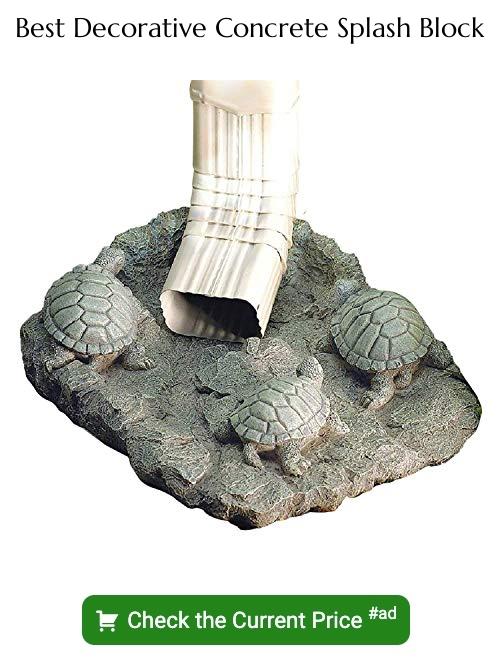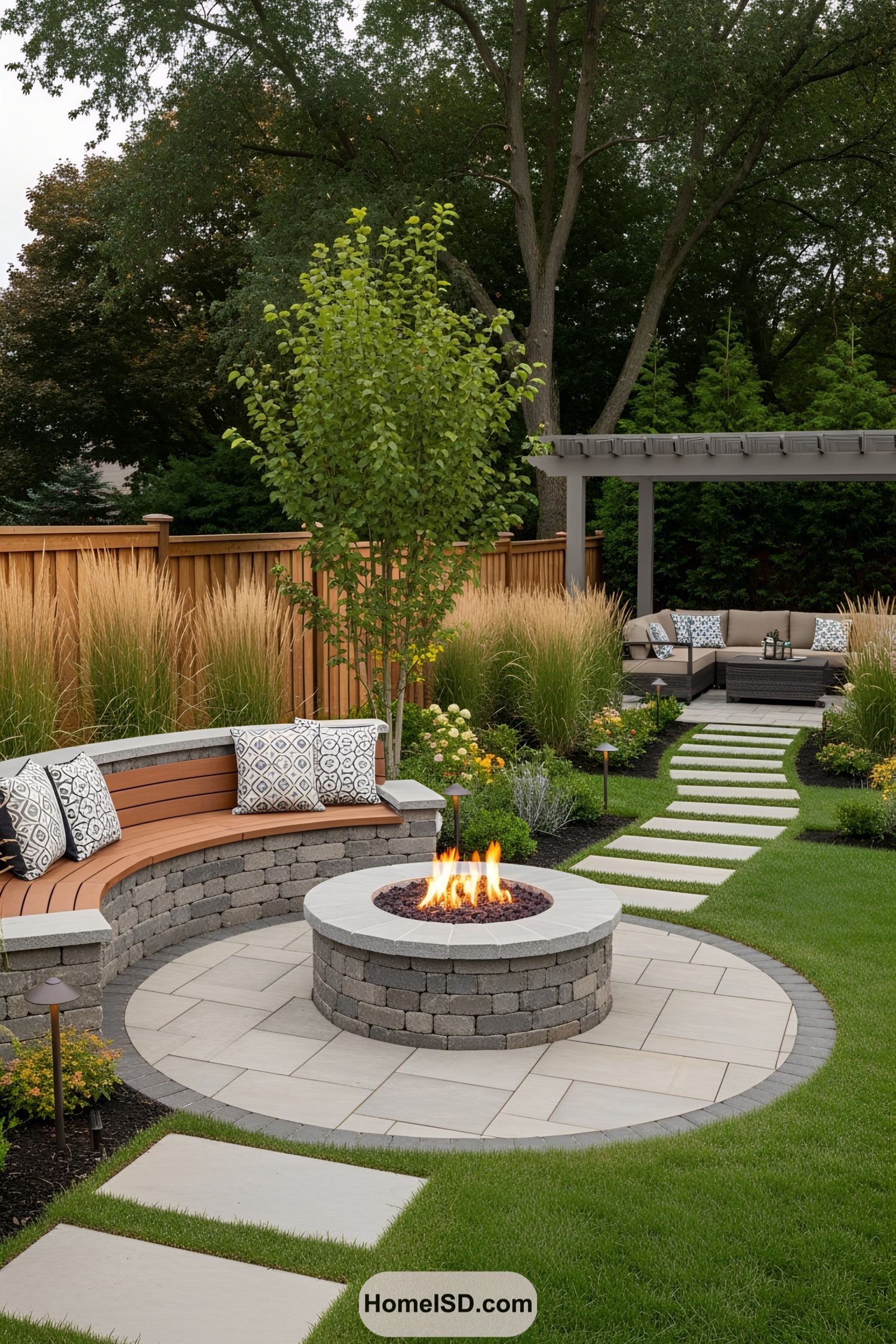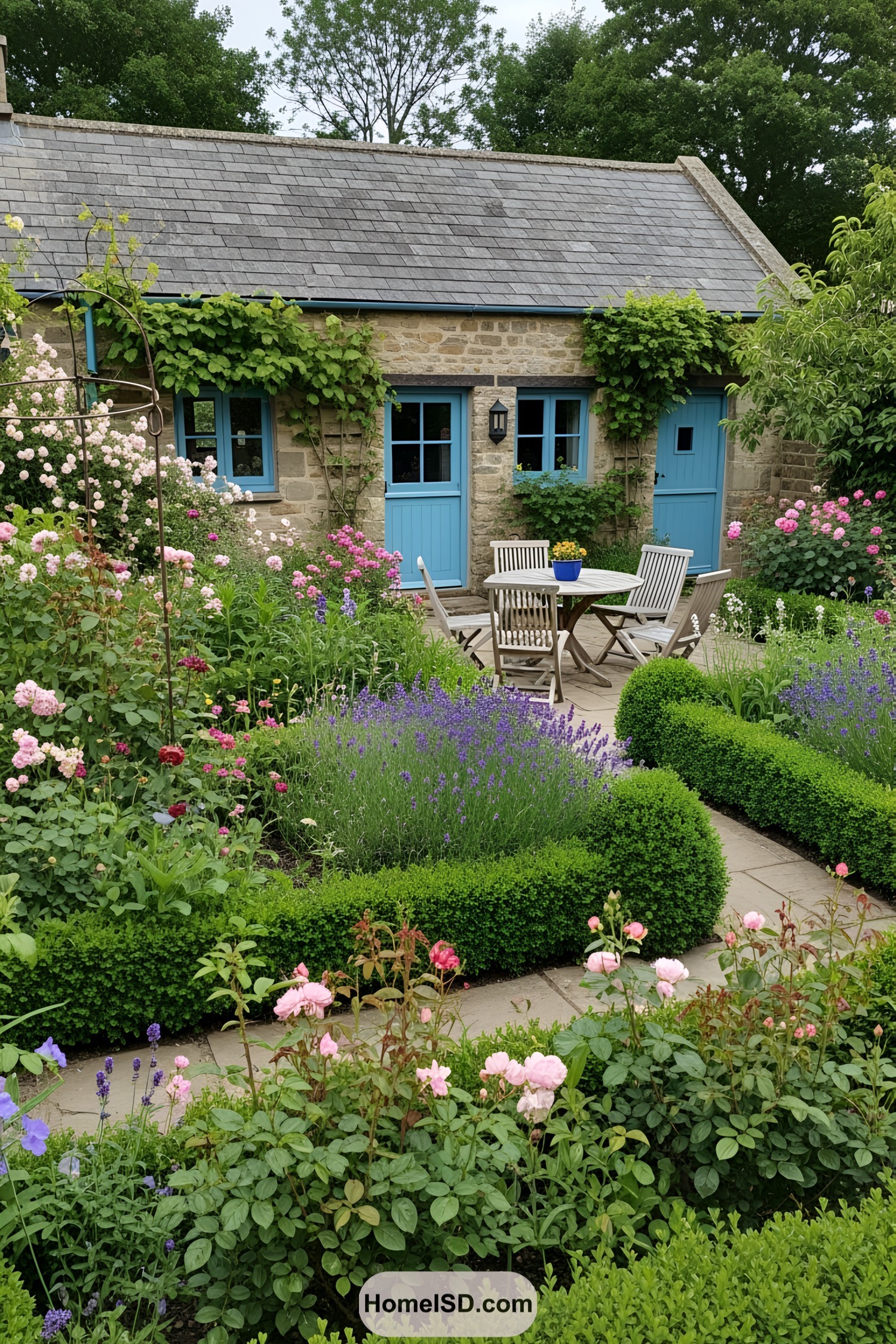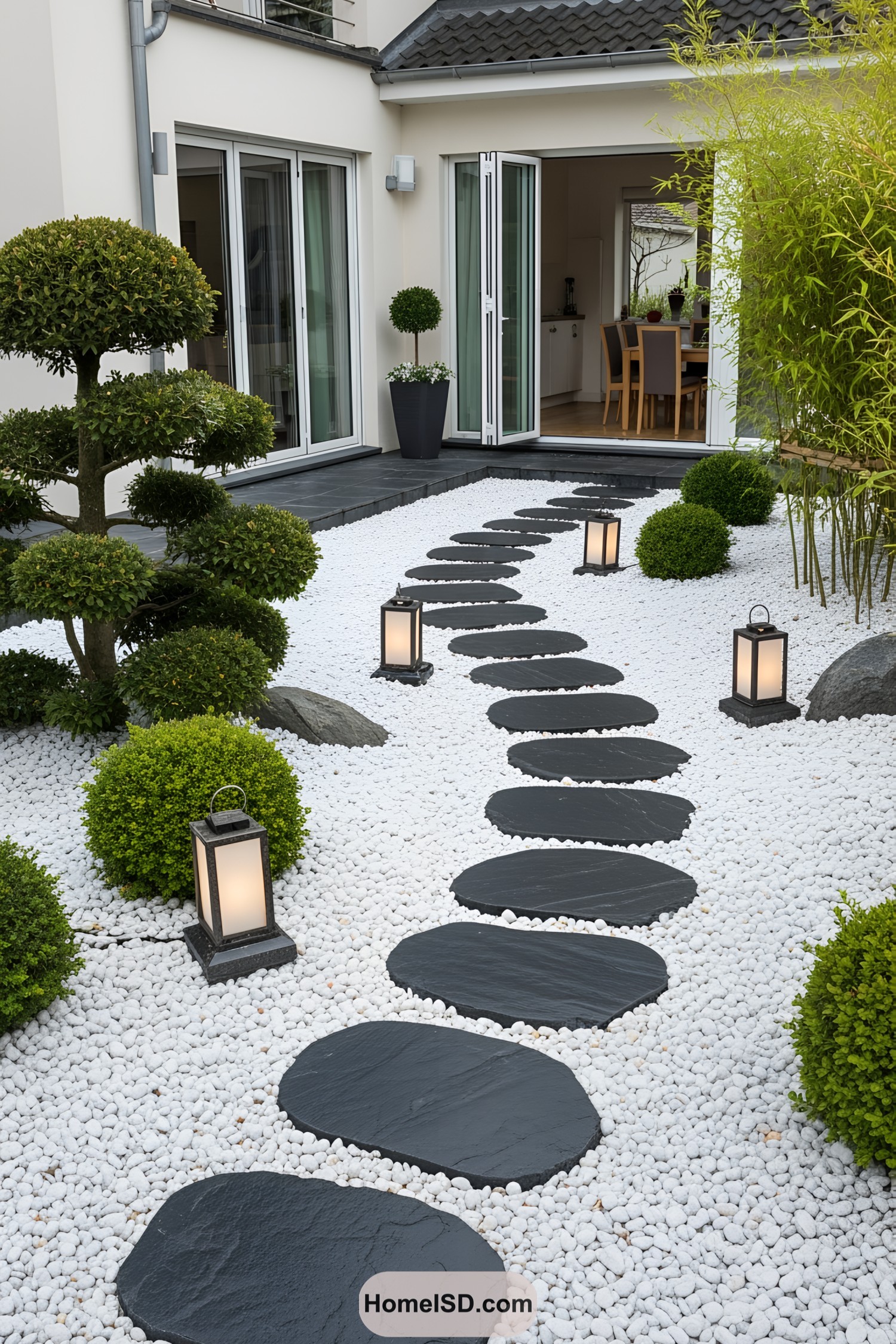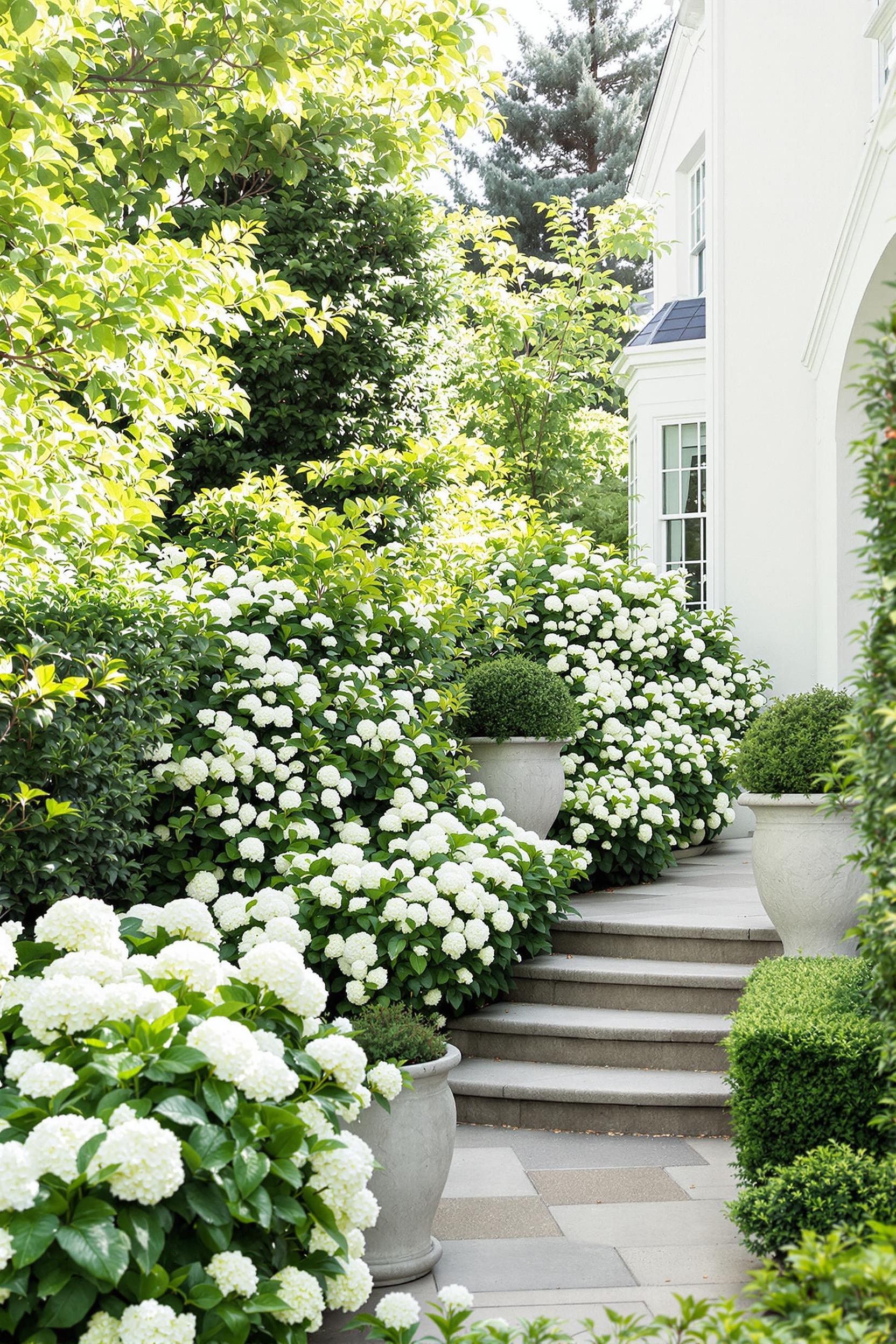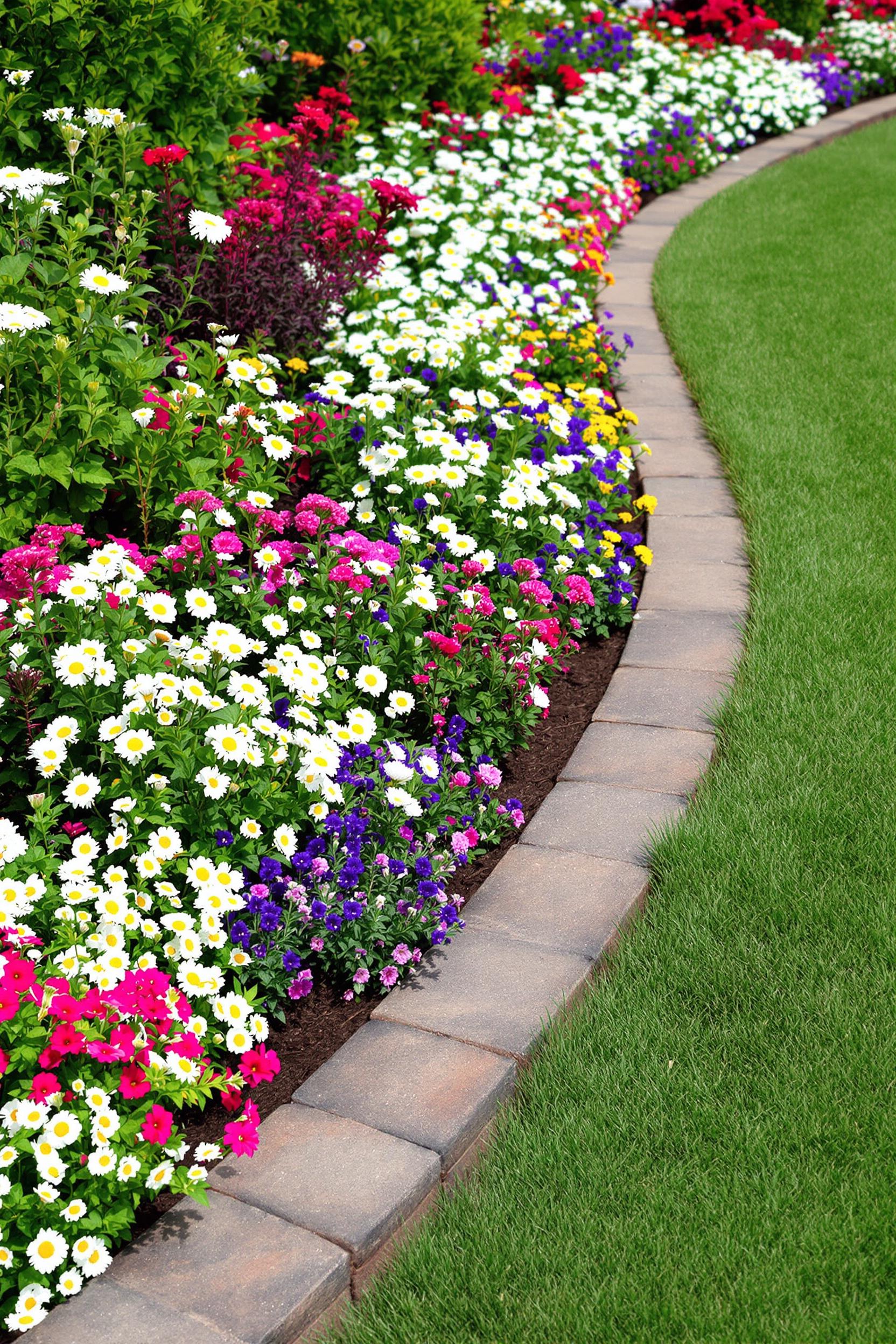Last updated on
Discover why a concrete splash block should be your next must-have addition because of its fascinating design impact and practical advantages in protecting your exteriors from water damages.
Key takeaways:
- Concrete splash blocks divert rainwater away from your home’s foundation.
- They prevent soil erosion and maintain the integrity of your landscaping.
- Concrete splash blocks are made of Portland cement, aggregate, and water.
- Installation is simple and requires minimal tools and effort.
- Concrete splash blocks are durable, low-maintenance, and come in various designs.
Purpose of Concrete Splash Blocks

Acting as ground guardians, these sturdy elements sit just beneath your downspouts, diverting rainwater away from the base of your home. This simple yet clever design helps mitigate pooling, which can lead to unsightly puddles or even worse, foundation damage.
They also play a crucial role in controlling soil erosion, maintaining the integrity of your landscaping by preventing washouts. By channeling water effectively, they ensure pathways and lawns remain intact after heavy rains.
Their use not only preserves your home’s structural well-being but also maintains the aesthetic appeal of your outdoor spaces.
Materials Used in Construction
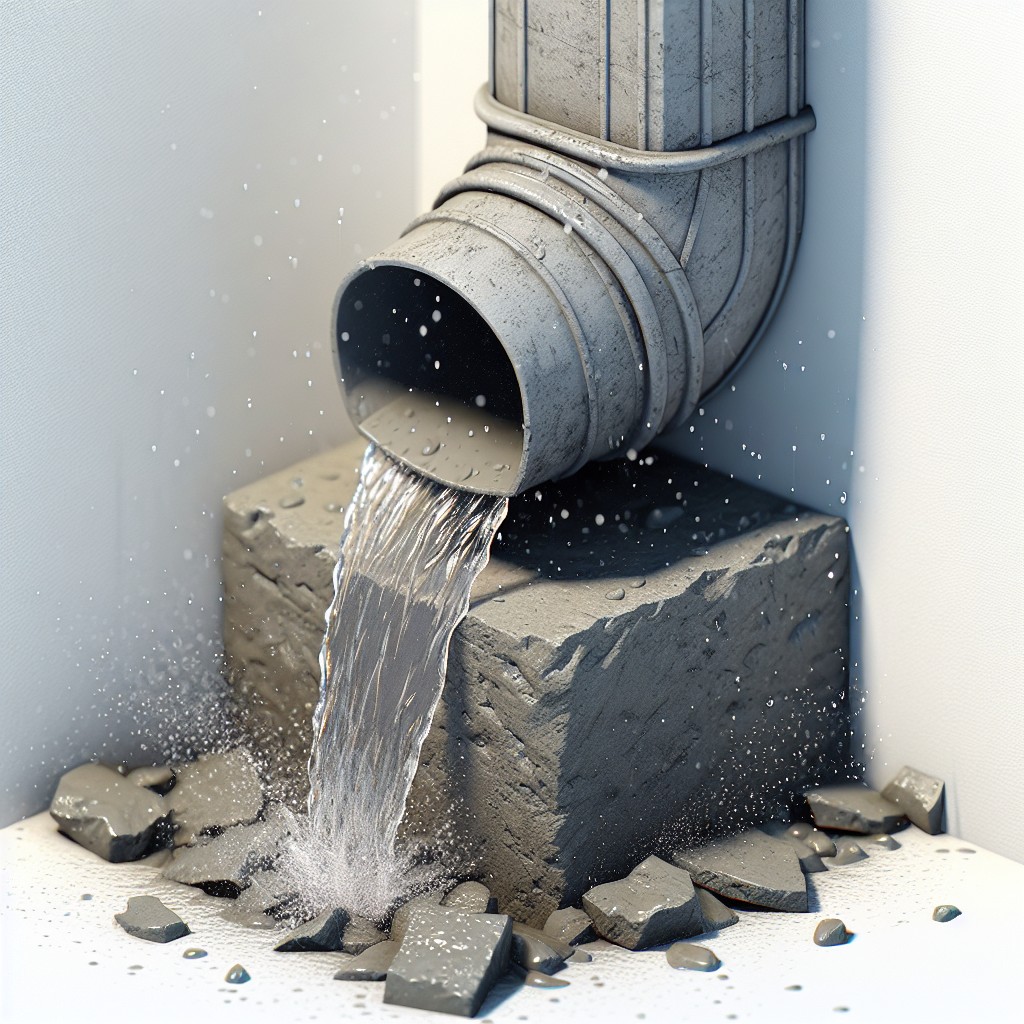
Concrete splash blocks are typically composed of a mixture of Portland cement, aggregate (such as gravel and sand), and water.
Reinforcements, like wire mesh or metal rods, are sometimes incorporated to enhance strength.
During production, additives might be included to boost freeze-thaw resistance, improve aesthetics, or modify drying time.
The blend is poured into molds that shape it into the desired form and size.
Once cured, the finished product presents a sturdy and weather-resistant surface ideal for enduring the impact of cascading water.
Installation Process
Installing a concrete splash block is a straightforward task that requires minimal tools and effort:
1. Identify the Outlet Point: Determine where downspouts discharge water. Positioning the splash block directly beneath this point is crucial for optimal performance.
2. Ensure Level Ground: Clear the area of debris and use a level to make sure the ground is flat. An even surface prevents tilting and maximizes efficiency in water diversion.
3. Place the Splash Block: Gently set the block beneath the downspout with the tapered end facing away from the foundation.
4. Adjust for Distance: The splash block should extend several inches from the house, ensuring that water is channeled far enough from the foundation to prevent soil erosion.
5. Check Angulation: Water should flow away from the house. If necessary, adjust the angle slightly to steer water in the preferred direction.
6. Secure the Splash Block: Though their weight often keeps them in place, in areas with heavy rain or wind, consider anchoring the block with stakes.
No specialized skills are needed for installation, making it an accessible project for homeowners looking to protect their property from water damage.
Design Variations
Concrete splash blocks are not a one-size-fits-all solution. They come in a wide array of designs to suit different aesthetic preferences and functional needs. Some options feature a textured surface, imitating natural stone, while others embrace a sleek, modern look with smooth finishes.
Decorative elements, such as patterns or embedded colored glass, can also be incorporated, adding visual interest to what is traditionally a purely utilitarian item. These design choices can enhance the curb appeal of a property while still effectively directing water flow away from building foundations.
Moreover, innovative shapes are available, ranging from conventional rectangular forms to more creative, curved outlines that can be strategically incorporated into diverse landscaping themes. This versatility ensures that splash blocks can be both a practical and an attractive addition to any outdoor space.
Size and Weight Considerations
Selecting the appropriate size of a concrete splash block is critical for efficient water diversion away from your building’s foundation. Standard blocks typically measure 30 inches in length, which suffices for most residential downspouts. However, for areas with higher rainfall, a longer block may be necessary to channel water further away, avoiding potential saturation of nearby soil.
Weight also plays a significant role in a splash block’s performance. A heavier block remains in place better, reducing the risk of displacement due to heavy water flow or strong winds. On average, a concrete splash block might weigh between 30 to 50 pounds—suitable to stay put under most conditions without being so heavy that it’s challenging to position or relocate when needed.
For a balanced setup, it’s essential to consider both the size and weight in relation to the downspout’s output and the typical weather patterns in your area, ensuring a reliable and stable solution for water management.
Maintenance Tips
Concrete splash blocks are low-maintenance, but regular checks will extend their functionality. Inspect for cracks or chips, particularly after harsh weather. Clear debris like leaves or sediment that may accumulate and block water flow. Occasional cleaning with soapy water and a brush keeps them functioning well and looking good. Avoid harsh chemicals that might erode the concrete. If you live in a region with severe freeze-thaw cycles, consider resealing your splash blocks every few years to prevent water absorption and subsequent cracking. Remember, maintaining consistent grading around the placement area ensures optimal performance and longevity.
Placement Guidelines
Positioning your concrete splash block correctly is crucial to maximizing its effectiveness. It should be placed directly beneath your downspout so that water is channeled away from the building’s foundation.
Ensure the splash block slopes away from the house, guiding the water to disperse without causing soil erosion or water pooling. The distance it should extend from your home depends on the slope of your yard but generally aims for at least 2 feet to ensure a safe diversion.
Check periodically to make sure it remains stable and hasn’t shifted. Proper placement also prevents path or grass damage due to the repetitive water flow from your gutter system.
Impact On Foundation and Soil Erosion
Concrete splash blocks play a crucial role in protecting your home’s foundation from water damage. By effectively channeling water away from the base, they mitigate soil erosion, which can lead to costly foundation issues over time.
They prevent the creation of small trenches caused by the constant dripping of water, thus preserving soil integrity and landscaping. Without their presence, water can accumulate near the foundation, potentially leading to cracks, weakening structural stability, and creating a conducive environment for mold growth.
Moreover, the prevention of erosion helps in maintaining the ground’s level, providing consistent support for your foundation. Regular inspection ensures they remain properly positioned to continue safeguarding your home’s structural health.
Comparison With Other Materials
Plastic and rubber alternatives are lightweight and often cheaper, but lack the durability of concrete. In contrast, metal splash blocks, typically aluminum or galvanized steel, resist erosion and can offer a longer service life but at a higher cost and with potential for rust. Wooden splash blocks may align with natural aesthetics but can decay over time, especially in moist environments. Concrete, while heavier and potentially more cumbersome to install, provides a balance of longevity, stability, and cost-efficiency that makes it a compelling choice for many homeowners and builders seeking a reliable solution to rainwater dispersion concerns.
Cost Factors
When evaluating the price of concrete splash blocks, several elements come into play. The size of the block and its thickness directly influence the material costs. Heavier or intricately designed splash blocks generally command a higher price due to the additional material and labor involved.
Local market conditions can also affect cost; prices may vary based on availability and transportation expenses. Furthermore, if you prefer a custom look, be prepared to invest a bit more for unique textures or colors that complement your landscape.
Bulk purchases can lead to savings – contractors or those taking on larger projects might benefit from volume discounts. It’s worth noting that despite the initial cost, the longevity and minimal maintenance of concrete splash blocks can make them an economical choice over the long term.
Always compare prices from multiple suppliers to ensure you receive a competitive quote. Keep in mind that investing in quality at the outset can prevent costly repairs to your foundation or landscaping in the future.
Lifespan and Durability
Concrete splash blocks are highly valued for their resilience, enduring harsh weather conditions and the test of time. Typically, they boast a lifespan that can extend over several decades with minimal degradation. This longevity stems from concrete’s inherent strength and its ability to resist wear from constant water flow.
Key factors that contribute to their endurance include:
- Reinforced concrete composition, which withstands substantial impact and water corrosion.
- Resistance to cracking and chipping, preserving structural integrity.
- Low porosity of concrete, reducing the risk of water absorption and freeze-thaw damage.
To maximize durability:
- Ensure proper placement away from heavy foot traffic to prevent chipping.
- Perform periodic inspections to detect any surface damage early.
- Keep them clear of debris to maintain effective water channeling.
Their robust construction minimizes the need for replacements, underscoring their cost-effectiveness and appealing to those aiming for long-term solutions in water management.
Environmental Considerations
Concrete is a ubiquitous material, but its environmental footprint is often a topic of discussion. In the manufacturing of concrete, significant energy is expended, and carbon dioxide is emitted, contributing to greenhouse gas emissions. However, concrete splash blocks have certain eco-friendly attributes worth considering:
- Durability: Their longevity means less frequent replacement, reducing the demand for new materials and the energy associated with production and transportation.
- Recyclability: Concrete can often be recycled at the end of its life, minimizing waste in landfills.
- Heat Reflection: Concrete reflects sunlight, deflecting heat away from building foundations, which can contribute to a reduction in urban heat islands and lower cooling costs.
- Water Management: By effectively channeling water away from structures, these splash blocks play a role in preventing soil erosion and preserving local waterways.
Individual efforts to mitigate environmental impact may include seeking suppliers who use recycled materials or lower carbon concrete alternatives, and ensuring proper installation to maximize the lifespan of the splash block.
Customization Options
Today’s homeowners and builders enjoy a range of aesthetic preferences, and concrete splash blocks are no exception to this trend. Advances in concrete technology allow for these practical items to be more than just functional; they can also serve as decorative elements that complement the exterior of a building.
- Color Variations: Most commonly found in natural concrete gray, splash blocks can also be pigmented to match or contrast the color scheme of a building’s exterior.
- Shapes and Patterns: While traditional splash blocks are rectangular, options now include curved or tapered edges, as well as imprinted patterns like faux stone to enhance visual appeal.
- Textured Finishes: The surface of a splash block can be manipulated to create a variety of textures, from smooth and polished to rough and rustic.
- Logo Embossment: For commercial properties, custom splash blocks can feature a company logo or branding, providing a unique and subtle marketing opportunity.
- Integrated Design Features: Some designs incorporate features like planters or decorative sculptures, turning a purely functional item into a conversation piece.
Through customization, your concrete splash block can effectively blend utility with creativity, ensuring your outdoor space is visually cohesive while still providing essential protection for your foundation.
Why Choose Nitterhouse Masonry?
Opting for Nitterhouse Masonry products ensures quality and longevity for your concrete splash blocks. With years of experience, Nitterhouse has perfected the art of producing superior concrete items that withstand the test of time and harsh weather conditions.
Their splash blocks are crafted from high-strength concrete, guaranteeing durability and resistance against cracking or chipping. Nitterhouse demonstrates a commitment to environmental sustainability, using eco-friendly practices in their manufacturing processes.
Moreover, their customer service is top-notch, providing guidance and support to ensure you select the ideal product to suit your specific needs. With a variety of designs to choose from, Nitterhouse splash blocks not only serve their purpose but also enhance the aesthetics of your exterior space.
Finding the Right Masonry Product
Selecting the ideal masonry product hinges on a combination of aesthetics, functionality, and budget.
- Assess the compatibility of the splash block with your current architectural style. Opt for a design that complements your building’s exterior.
- Factor in the size and slope of your gutter’s downspout. Ensure the splash block is proportionate and efficient in channeling water.
- Evaluate the local climate conditions. In areas with heavy rainfall, prioritize durability and a design capable of handling larger volumes of water.
- Consider the budget but also weigh the long-term benefits of investing in a higher quality product that may offer better durability and less maintenance.
- Research manufacturers with a solid reputation for quality and customer service to ensure support and satisfaction with your purchase.
By integrating these considerations, you’re primed to make an informed choice that aligns with your needs, contributing to a functional and visually appealing drainage system.
Recap
